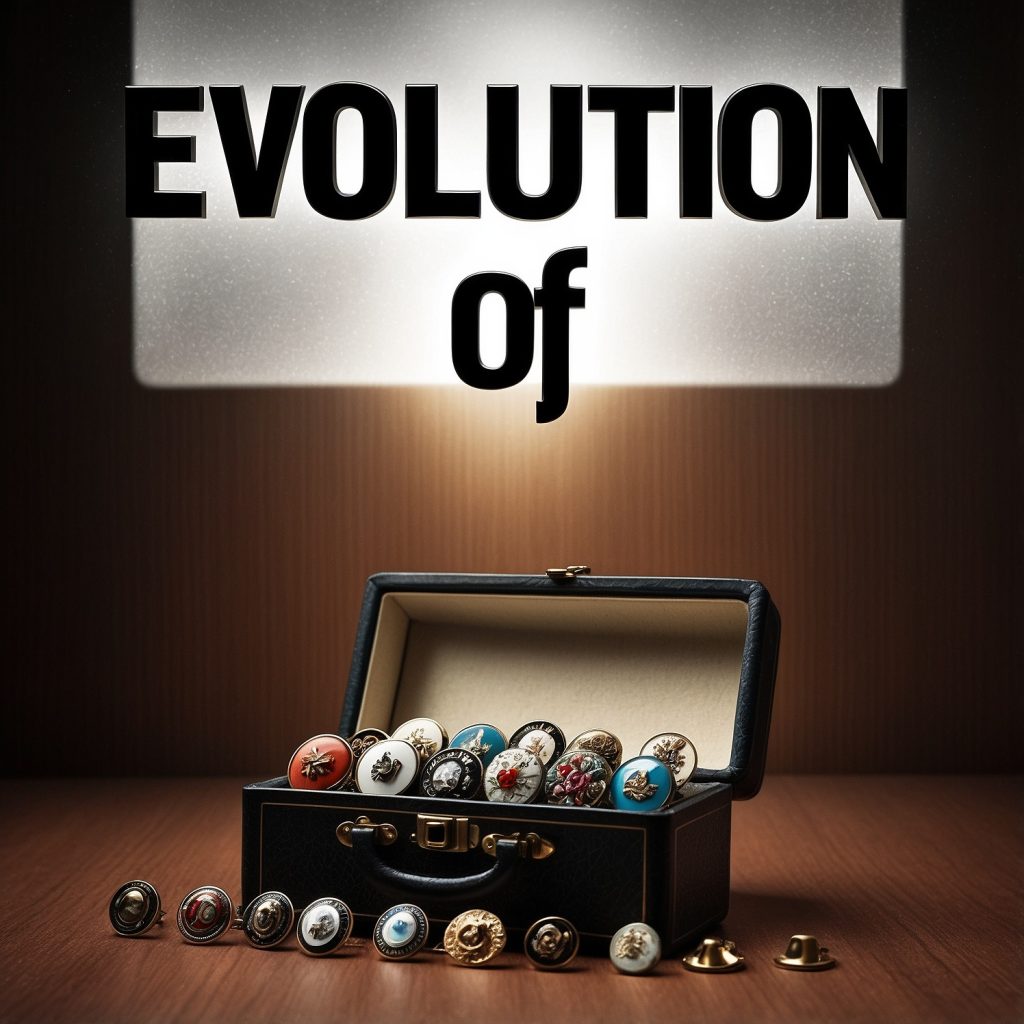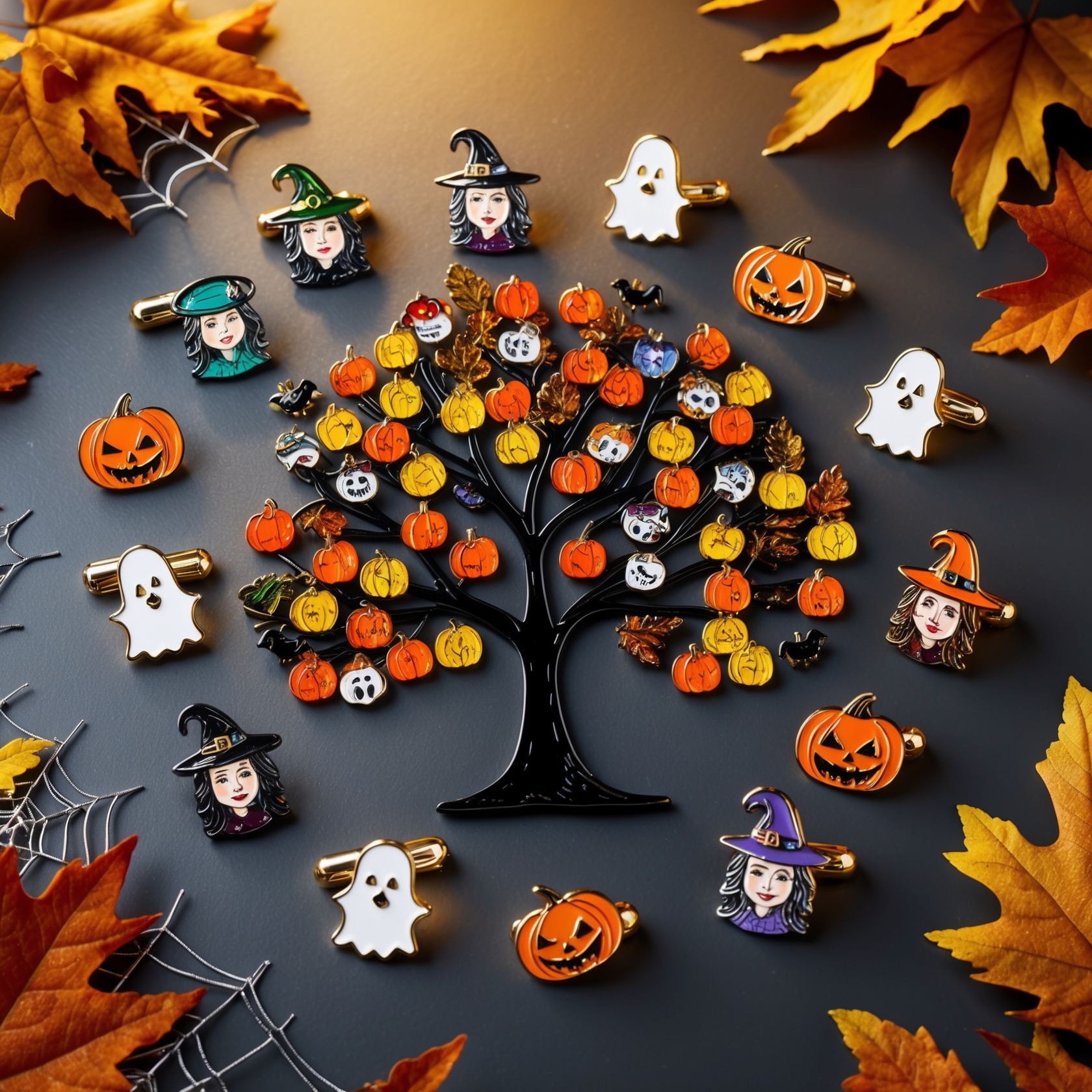In today’s world, event lapel pins have become more than just simple accessories—they serve as powerful symbols of identity, achievement, and belonging. Whether they’re used for commemorating a special occasion, recognizing membership in an exclusive group, or marking a milestone, lapel pins hold a significant place in many cultural and professional circles. Over time, event lapel pins have evolved in their design, meaning, and function, adapting to the needs of the times and the values of the people who wear them.
From the earliest versions that adorned military uniforms to today’s sophisticated, personalized pins used at conferences, concerts, and sporting events, lapel pins have undergone a fascinating transformation. Their significance, once limited to a handful of industries and institutions, has expanded to include everything from corporate events to pop culture fandoms.
In this article, we’ll take a comprehensive look at how event lapel pins have changed over time, how their designs have evolved, and the shifting importance of these small yet meaningful items. From their historical origins to their contemporary relevance, let’s explore how lapel pins have become powerful tools for personal expression, branding, and commemoration.
The Origins of Lapel Pins: Early Military and Political Use
Long before custom event lapel pins became popular at conferences and social gatherings, they were primarily associated with military and political purposes. In fact, the roots of lapel pins can be traced back hundreds of years, to times when pins were used to denote rank, allegiance, or group membership.
1. Military Origins: Pins of Power and Allegiance
The earliest forms of lapel pins appeared in military contexts, where they were used to signify rank, allegiance, and merit. These pins, which were often crafted from precious metals, were worn on uniforms as a way of identifying soldiers’ roles within their units. Over time, these military pins evolved to include insignia that represented specific regiments, divisions, or missions.
The tradition of military pins continues to this day, with event lapel pins used for various military functions, from recognizing achievements to commemorating deployments. In many countries, service members and veterans wear pins proudly on their lapels to represent their years of service, specific campaigns, or honors received.
2. Political and Civic Use: Early Lapel Pins for Campaigns and Causes
In the late 18th and early 19th centuries, the use of lapel pins began to expand beyond the military. Politicians and civic leaders started using pins as part of their campaigns, distributing them to their supporters as symbols of solidarity and loyalty. In particular, the rise of democratic elections in Europe and North America saw an increase in the use of campaign pins.
In the U.S., one of the earliest uses of lapel pins in politics can be traced to the presidential election of 1824, when pins bearing the names of candidates were distributed to voters. These early pins were often simple in design, typically featuring a candidate’s name or a patriotic symbol such as an eagle or flag. The goal was to provide a tangible, wearable item that could show public support for a candidate or cause.
This political use of custom lapel pins set the stage for their broader adoption in society. Over time, pins became associated not only with political campaigns but also with social movements, charitable causes, and other forms of public advocacy.
Lapel Pins in the 20th Century: From Collectibles to Event Memorabilia
By the 20th century, lapel pins had become a staple at public events, particularly in the context of World’s Fairs, sports competitions, and international gatherings. With improvements in manufacturing and the growing popularity of events on a global scale, lapel pins began to take on new significance as both collectibles and memorabilia.
1. World’s Fairs and Expos: Early Event Lapel Pins
The late 19th and early 20th centuries were marked by the proliferation of international expos and world’s fairs, large-scale events that brought together countries from around the world to showcase technological advancements, cultural achievements, and artistic innovation. These events quickly became major spectacles, attracting millions of visitors and prompting the creation of a wide range of commemorative items, including event lapel pins.
One of the earliest examples of lapel pins as event memorabilia can be traced back to the 1893 Chicago World’s Fair (also known as the World’s Columbian Exposition). Visitors to the fair were able to purchase or receive souvenir lapel pins as mementos of their experience. These pins often featured intricate designs that reflected the themes of the fair, from images of famous landmarks to depictions of technological innovations.
As world’s fairs continued into the 20th century, lapel pins became a common way to commemorate these landmark events. Visitors prized these pins as keepsakes that represented their participation in an important cultural and historical moment.
2. Olympic Games: The Rise of Lapel Pin Trading
Perhaps one of the most iconic uses of event lapel pins came with the rise of the modern Olympic Games. Beginning in the early 20th century, Olympic athletes, officials, and spectators began wearing and exchanging pins that represented their countries, teams, or specific Olympic Games. These pins quickly became coveted items, and by the 1980s, Olympic pin trading had become a phenomenon in its own right.
At each Olympic Games, athletes, coaches, and fans from around the world bring specially designed lapel pins that feature their country’s flag, national symbols, or mascots. Pin trading areas are often set up at Olympic venues, where collectors and enthusiasts can trade pins with one another, often forming lasting friendships in the process.
Olympic lapel pins are a prime example of how these small items can carry immense significance, acting as a bridge between cultures and nations. Each pin tells a story, representing not only a specific Olympic Games but also the global spirit of friendship and competition that the Olympics embody.
3. Corporate and Entertainment Events: A New Era of Event Lapel Pins
As the 20th century progressed, lapel pins expanded beyond political and global events to include corporate and entertainment sectors. Major companies, conferences, and entertainment franchises began using lapel pins to promote their brands and engage with audiences.
For example, corporate events such as trade shows, product launches, and conventions often featured branded event lapel pins as giveaways or collectibles. These pins served a dual purpose: promoting the company’s brand while giving attendees a tangible souvenir from the event. With the rise of pop culture conventions like Comic-Con in the late 20th century, entertainment-focused lapel pins became particularly popular, featuring designs based on comic books, movies, and TV shows.
As the corporate world and entertainment industry began to embrace the power of lapel pins, the designs became increasingly creative and detailed. From enamel pins depicting iconic logos to highly collectible limited-edition pins for fans, the range of styles expanded significantly.
The Evolution of Event Lapel Pin Design: Materials, Techniques, and Trends
The design of event lapel pins has evolved significantly since their early days in the military and political arenas. With advancements in manufacturing techniques, the use of different materials, and the increasing popularity of lapel pins across a wide range of industries, the possibilities for pin design have grown tremendously.
1. Materials and Manufacturing: From Metal to Enamel
Early lapel pins were often crafted from metals such as brass, bronze, or gold, with simple engravings or stamped designs. These early pins were sturdy and functional, but they lacked the color and detail that would later become hallmarks of modern lapel pins.
In the mid-20th century, the introduction of cloisonné enamel techniques allowed for more colorful and intricate designs. Cloisonné is a method in which enamel powder is placed into small recesses within the metal pin and then fired at high temperatures to create a smooth, glossy surface. This technique allowed for the production of pins with bright colors and detailed designs, making them more visually appealing and suitable for a wide range of applications.
Over time, other enamel techniques emerged, such as soft enamel, which allowed for textured surfaces and more affordable mass production. This shift enabled the production of highly detailed pins that were both cost-effective and eye-catching. Today, enamel pins are one of the most popular forms of event lapel pins, especially for commemorating events, promoting brands, and celebrating fandoms.
2. Trends in Pin Design: Minimalism, Pop Culture, and Customization
As the materials and techniques used to create lapel pins evolved, so too did the trends in pin design. In the late 20th and early 21st centuries, several design trends emerged, each reflecting broader cultural and aesthetic shifts.
- Minimalism: One of the most popular trends in modern lapel pin design is minimalism. With a focus on clean lines, simple shapes, and limited color palettes, minimalist lapel pins are often used in corporate settings, where professionalism and simplicity are valued. Minimalist pins are also favored in fashion, with sleek designs that can be worn on a variety of outfits without overwhelming the wearer’s overall look.
- Pop Culture References: Another major trend in lapel pin design is the incorporation of pop culture references. From pins featuring beloved characters from movies and TV shows to pins with iconic phrases or memes, pop culture lapel pins have become a way for people to showcase their fandom and interests. Conventions like Comic-Con have embraced this trend, with limited-edition pins featuring designs from popular franchises like Star Wars, Marvel, and Harry Potter.
- Customization and Personalization: As technology has made it easier to create custom designs, personalized event lapel pins have become increasingly popular. Whether it’s a pin for a corporate event featuring a company logo or a wedding pin with the couple’s initials and wedding date, custom pins offer a unique way to commemorate a specific occasion or brand. These personalized pins allow individuals and organizations to create items that are meaningful and tailored to their specific needs.
3. Limited Editions and Collectibility
As lapel pins have become more widespread, their collectibility has increased. One of the major trends in recent years is the creation of limited-edition lapel pins, often produced in small quantities and sold or distributed at specific events. These limited-edition pins are highly sought after by collectors, who view them as valuable pieces of memorabilia.
Pin collecting, which began with early political and military pins, has now expanded into the worlds of entertainment, sports, and fashion. Major brands, entertainment franchises, and even sports teams have embraced the collectibility of lapel pins, offering limited-edition designs to fans and collectors. The appeal of these limited pins lies in their rarity and exclusivity, which makes them prized items for those who manage to obtain them.
The Social Significance of Event Lapel Pins: Identity, Belonging, and Expression
Beyond their aesthetic and collectible qualities, event lapel pins hold deep social significance. They offer wearers a way to express their identity, values, and affiliations, making them powerful tools for personal expression and social connection.
1. Lapel Pins as Symbols of Identity and Belonging
One of the most enduring uses of lapel pins is as a symbol of identity and belonging. Whether it’s a pin worn by members of a club, an organization, or a fandom, lapel pins allow individuals to signal their membership in a specific group. For many people, wearing a lapel pin is a way of showing solidarity with a cause, team, or community.
In the corporate world, event lapel pins are often used to signify membership in a company or to recognize employee achievements. For example, companies may award pins to employees who have reached certain milestones, such as years of service or exceptional performance. These pins not only serve as recognition of the individual’s accomplishments but also as a visual representation of their connection to the organization.
In the world of fandoms, lapel pins have become a way for fans to show their dedication to their favorite franchises, characters, or celebrities. At fan conventions, attendees often wear pins representing their favorite movies, TV shows, or comic books, creating a sense of community among like-minded individuals.
2. Lapel Pins in Activism and Advocacy
In addition to being symbols of personal identity, event lapel pins have long been used as tools for activism and advocacy. Throughout history, pins have been used to promote social and political causes, from early suffragette pins advocating for women’s right to vote to more recent pins supporting LGBTQ+ rights or climate action.
Lapel pins have a unique ability to convey a message in a subtle yet powerful way. By wearing a pin that promotes a cause, individuals can express their support for that cause without needing to say a word. This makes lapel pins an ideal tool for raising awareness, as they can be worn in everyday settings, sparking conversations and encouraging others to learn more about the cause.
3. Fashion and Personal Expression
In recent years, lapel pins have also become a popular form of personal expression in fashion. From minimalist pins worn on suit lapels to bold, colorful pins displayed on denim jackets or backpacks, event lapel pins offer a way for individuals to customize their outfits and express their personal style.
Fashion-forward lapel pins often feature designs that reflect the wearer’s personality, interests, or sense of humor. These pins have become a staple in the wardrobes of fashion influencers, celebrities, and everyday people looking for a unique accessory to complete their look.
The Future of Event Lapel Pins: Innovation and Digital Integration
As we look to the future, it’s clear that event lapel pins will continue to evolve, driven by advances in technology and changes in consumer preferences. From new materials and manufacturing techniques to the integration of digital elements, the future of lapel pins is full of exciting possibilities.
1. Eco-Friendly and Sustainable Materials
With growing awareness of environmental issues, there is increasing demand for eco-friendly and sustainable lapel pins. Manufacturers are experimenting with materials such as recycled metals, biodegradable plastics, and sustainably sourced wood to create lapel pins that have a smaller environmental footprint. These eco-friendly pins appeal to consumers who are conscious of their impact on the planet and want to support brands and events that prioritize sustainability.
2. Digital Integration: Smart Lapel Pins
As wearable technology continues to advance, it’s likely that event lapel pins will incorporate digital elements in the near future. Smart lapel pins could include features such as QR codes, NFC (Near Field Communication) technology, or Bluetooth connectivity, allowing wearers to interact with digital content or access exclusive information by scanning their pin with a smartphone.
For example, attendees at a corporate conference might receive a smart lapel pin that provides access to event schedules, speaker bios, or networking opportunities when scanned. This integration of physical and digital elements would enhance the functionality of lapel pins, making them not only a fashion accessory but also a tool for communication and engagement.
3. Customization and Personalization at Scale
With advancements in 3D printing and digital design, the ability to create custom lapel pins on demand is becoming more accessible. In the future, event organizers may be able to offer attendees the option to design their own personalized pins, choosing from a variety of colors, shapes, and symbols to create a pin that is uniquely their own.
This level of customization would allow individuals to take an even more active role in the design process, creating pins that reflect their personal tastes and preferences. For event organizers, this ability to offer personalized lapel pins could enhance the attendee experience, making the event feel more tailored and memorable.
The Timeless Appeal of Event Lapel Pins
From their origins as military insignia to their current status as popular collectibles and fashion accessories, event lapel pins have proven to be versatile, meaningful, and enduring symbols. They have evolved alongside changes in society, technology, and culture, adapting to the needs and values of the people who wear them.
Today, event lapel pins serve as more than just decorative items—they are tools for communication, personal expression, and connection. Whether worn to show solidarity with a cause, commemorate a special event, or simply add a touch of personality to an outfit, lapel pins continue to hold a special place in the hearts of those who wear and collect them.
As we look to the future, the possibilities for event lapel pins are endless. With innovations in materials, design, and technology, these small but significant accessories will undoubtedly continue to evolve, offering new ways for people to express themselves, connect with others, and celebrate the moments that matter.
If you are interested in buying high quality custom lapel pins, you can call us at 866-246-9375 or fill out a FREE quote form.




